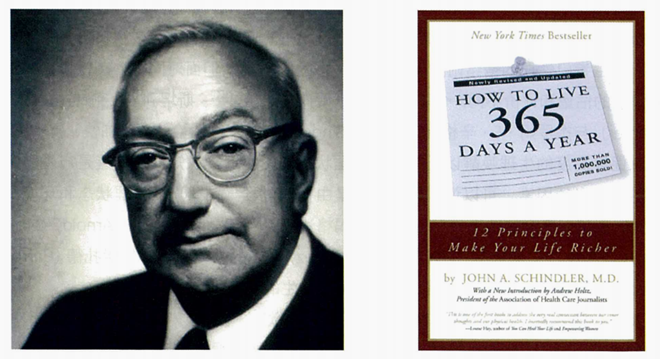Exploring light and emotions
The second half of the 20th century witnessed a major shift in the spectrum of human diseases. With the advancement of medical technology and changes in population structure, lifestyle, and living environment, the incidence of infectious and malnutrition diseases declined dramatically, while the prevalence of chronic non-communicable diseases such as cardiovascular diseases, cancer, mood disorders, Alzheimer’s disease, and psychosomatic diseases increased dramatically, becoming the most potent enemy threatening human health and life.

In the 21st century, “disease medicine” is transformed into “health medicine”, and the prevention and treatment of human diseases and health protection are developing in a diversified way, and the medical model of “biology, psychology and society” has emerged. The “bio-psycho-social” model of medicine has emerged.
In 1943, James Halliday, an American physician, introduced the concept of psychosomatic illness and emphasized that psychological factors can cause illness.

and his book “Illness from the Heart
In his book “How to Live 365 Days a Year”, John A. Schindler, a practicing American physician, states that up to 76% of illnesses are related to bad emotions (in this case, hidden underlying emotions).
Not only do chronic bad moods lead to mental illness or psychological disorders, but they also cause negative reactions in the nervous and endocrine systems, leading to organic pathologies and functional disorders. For example, the human gastrointestinal tract is known as the palette of emotions, anxiety, depression, anger and other negative emotions may affect the gastrointestinal function, causing symptoms such as diarrhea and stomach pain. Stomach ulcers and duodenal ulcers are the most typical psychosomatic diseases. Through reasonable methods to regulate emotions and maintain an optimistic and positive state of mind is an important means to prevent and treat diseases and promote physical and mental health.
Light has significant emotional intervention effects through visual and non-visual effects, and also affects the cognitive processing of the brain such as memory, attention and decision making, and has health effects that should not be underestimated.

Emotion is an extremely complex psychophysiological phenomenon, reflecting the interaction between human subjective consciousness and cognition, the inner biological nervous system and the external environment. Since the time of ancient Greek civilization, humans have been tirelessly exploring the mystery of emotions, explaining them from different disciplinary perspectives, defining and classifying them. Nowadays, emotions are not only an important object of psychological research, but also an international frontier and a hot issue in multidisciplinary research.
Charles Robert Darwin, in The Expression of Emotion in Man and Animals, discusses the biological basis of emotions and emphasizes the role of the environment on emotional behavior. James Lange argues that stimuli trigger activity in the autonomic nervous system, producing changes in physiological states, and that emotions are the product of this process.

Cannon Bard asserts that the thalamus is the center of emotional activity, producing emotions of specialized nature attached to simple sensations when signals travel directly from the receptors or down from the cortex to the thalamus. When people are confronted with the same stimulus situation, individuals will have different emotional responses due to the different estimation and evaluation of the situation. Stanley Schachter and Jerome E. Singer proposed that individuals experience high levels of physiological arousal such as increased heart rate, stomach contractions, and shortness of breath, as well as individuals’ cognitive arousal to changes in physiological states are two necessary factors for the production of specific emotions.
It can be said that emotional states are the result of the integration of cognitive processes (expectations), physiological states and environmental factors in the cerebral cortex. In addition, Magda B. Arnold’s doctrine of “rated arousal”, James Papez’s agonistic circuit, Carroll Ellis Izard’s “motivational differentiation”, and many others have been proposed for emotional states. Izard’s “Motivation I Differentiation” and many other accounts of emotion generation.

The American psychologist Paul Ekman defined six basic human emotions: anger, disgust, fear, pleasure, sadness, and surprise. Like the three primary colors mixing to create multiple colors, the basic emotions combine with each other to derive a variety of compound emotions such as tension, anxiety and depression. The human inner world is so rich and subtle that it is beyond the scope of language to elucidate.
Emotional dimensional models have been gradually developed to represent the relationship between various emotions, to explain human emotions, and to describe emotional states. Wilhelm Wundt was the first to explicitly propose the Emotional Dimension theory, which states that emotions consist of three dimensions: “pleasant and unpleasant, excited and calm, and tense and relaxed”. Each specific emotion is located in a different position between the three dimensions and the two poles.
R. Piutchik, an American psychologist, believed that emotions consist of three dimensions: intensity, similarity, and bipolarity, and used an inverted cone to describe the relationship between the three dimensions of emotions. Charles E. Osgood’s study evaluated emotional experience in terms of three dimensions: evaluation, intensity, and activeness.
Albert Mehrabian and James A. Russell proposed the PAD three-dimensional emotion model in 1974, based on this idea that emotions possess three dimensions: Pleasure, Activation and Dominance:
P is Pleasure-Displeasure, which represents the positive and negative characteristics of an individual’s emotional state.
A is Arousal-Nonarousal, which indicates the level of neurophysiological activation of the individual
D is dominance-submissiveness
(Dominance-Submissiveness), which indicates the individual’s state of control over situations and others
It is used to indicate whether the emotion is subjective or influenced by the objective environment.
Specific emotions can be represented by the values of these three dimensions in spatial coordinates, with the values on each dimension ranging from -1 to +1, +1 indicating a high value on this dimension and -1 indicating a low value on this dimension called PAD.
Once upon a time, the study of emotions was quite difficult, and animal experiments could understand the emotional reflexes and neural projections of animals in real time, but the emotional responses of lower animals may be quite different from human emotions. The development of advanced nondestructive neuroimaging techniques, including brain waves and magnetic resonance functional imaging, provides avenues to explore emotional brain mechanisms.

Since the 1980s, numerous studies have shown that circuits in the brain control people’s emotions, integrate and process emotional information, and produce emotional behaviors. 1952, Panl D. MacLean formally introduced the term Limbic System, which consists of a series of neural clusters and the cerebral cortex, including the cingulate gyrus, hippocampal gyrus, amygdala, and septum, The limbic system is composed of a series of neural clusters and the cerebral cortex, including the cingulate gyrus, hippocampal gyrus, amygdala, septum, hypothalamus, and papillae. The amygdala is the key nucleus for emotional processing.
Research suggests that the amygdala is likely the body’s emotional integration center, integrating and projecting sensory information to the cortex, hypothalamus and brainstem nuclei to form emotions at the conscious level as well as somatic and visceral emotional responses. Recognition and expression of negative emotions such as fear and depression, perception of emotional faces, and emotional memory are all associated with the amygdala. The hypothalamus has an extremely important role in emotion regulation; it is the highest center under the vegetative nerve cortex, an important point of contact for the limbic system, the reticular formation.
The hippocampus is responsible for learning and memory and is also involved in emotion regulation. Conducting research on emotional brain mechanisms is necessary and urgent, and will help people explore the emotional healing effects of light in a more informed and systematic way, so that they can develop healthier light strategies with more practical effects.

